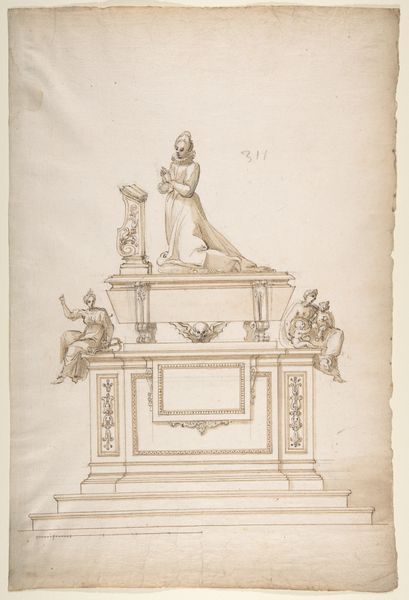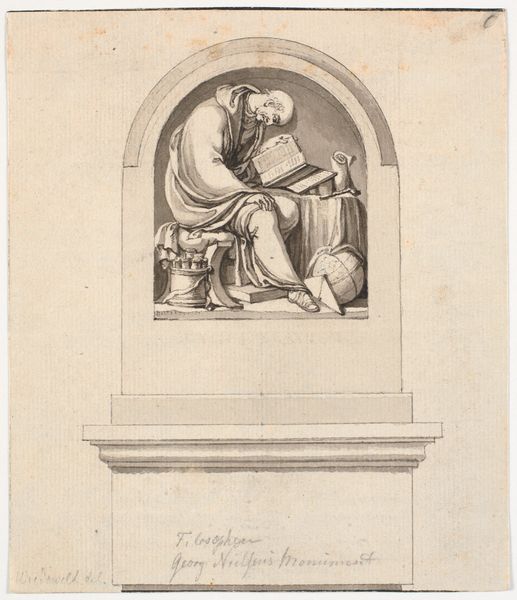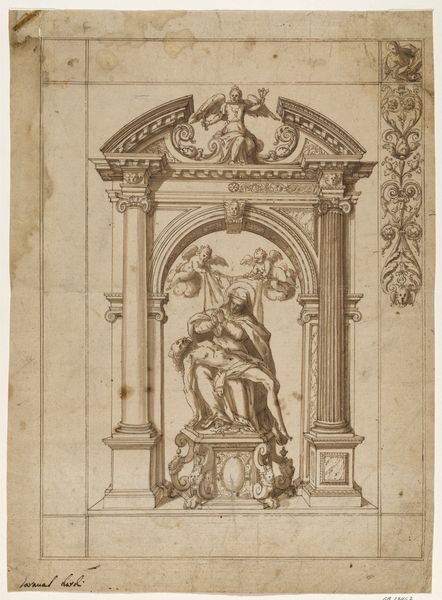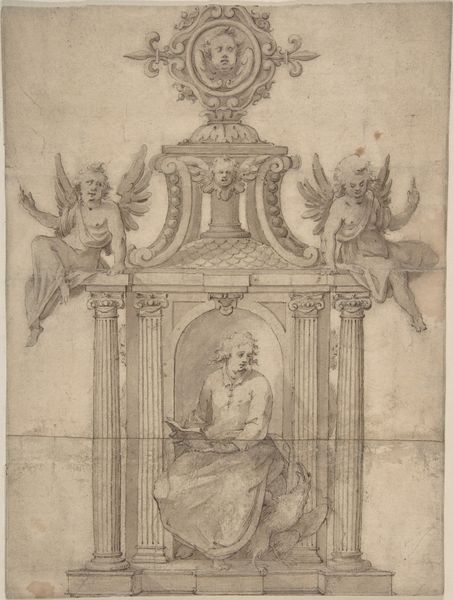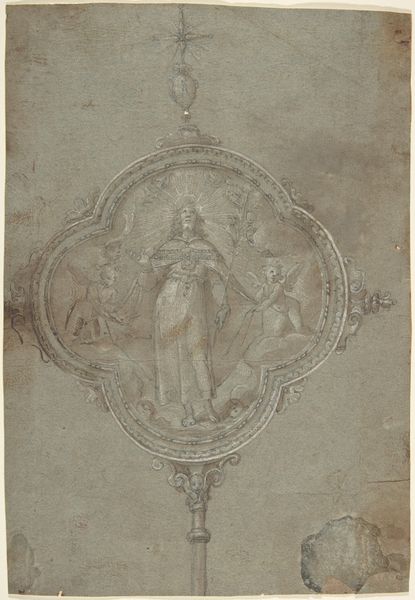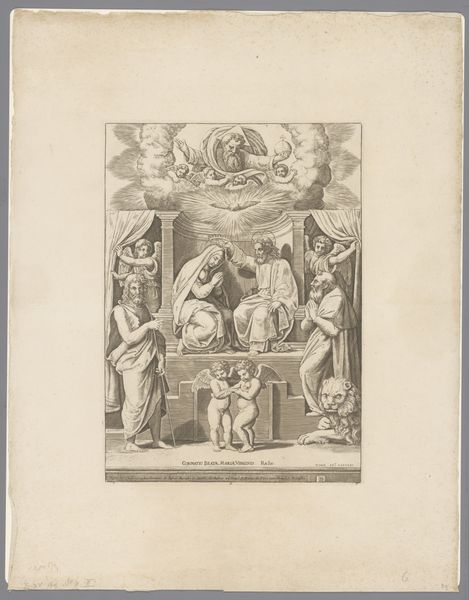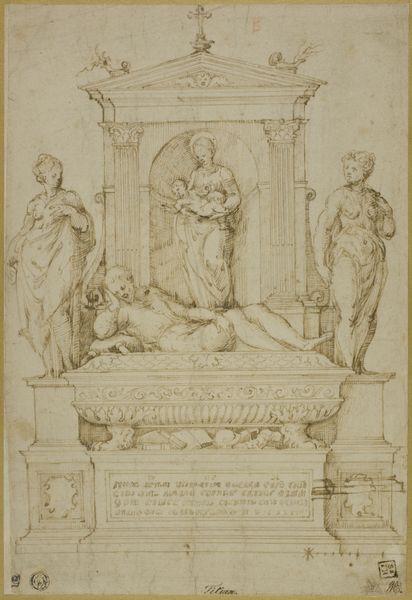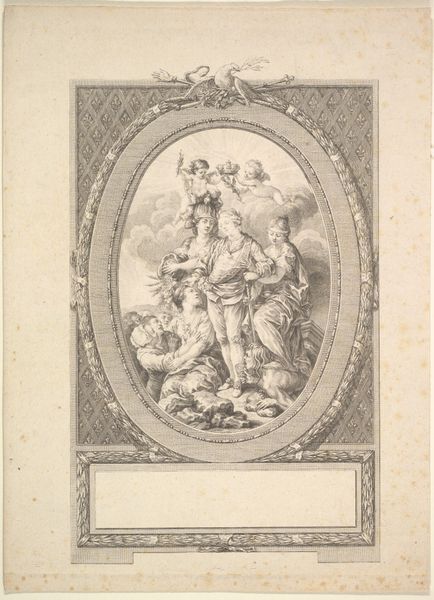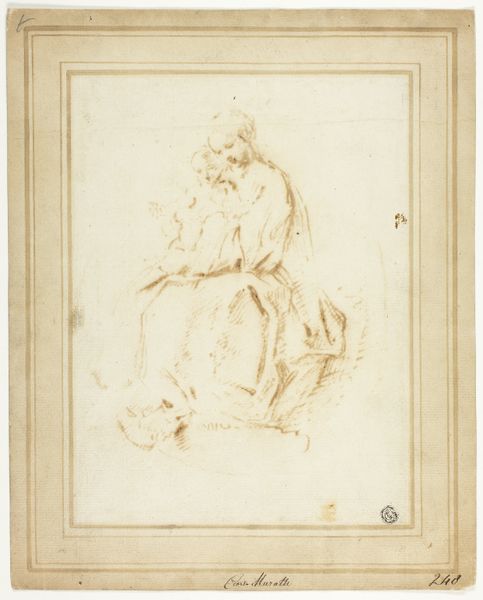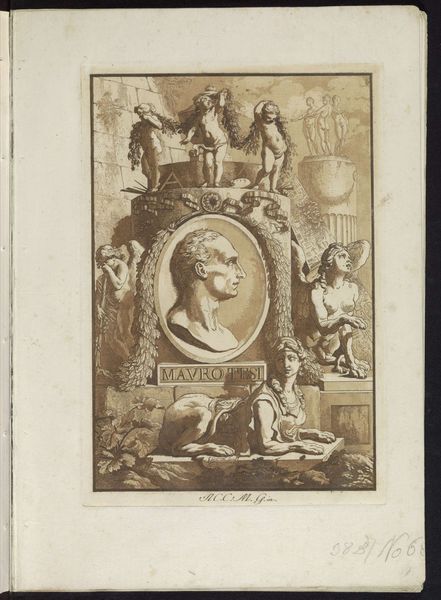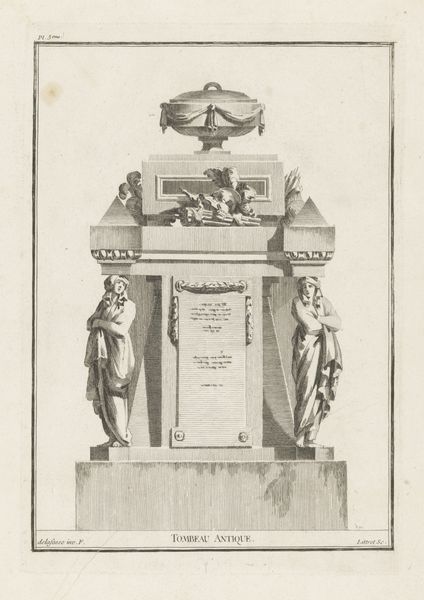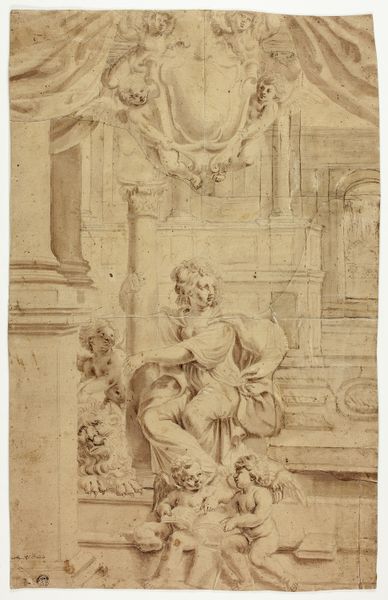
drawing, print, etching, paper, ink
#
drawing
# print
#
etching
#
classical-realism
#
etching
#
paper
#
ink
#
history-painting
Dimensions: 12 3/4 × 8 11/16 in. (32.39 × 22.07 cm) (plate)17 1/8 × 11 1/2 in. (43.5 × 29.21 cm) (sheet)
Copyright: Public Domain
This print, ‘Fascicule I,’ was created by Jean Claude Richard, Abbé de Saint-Non, around the late 18th century using etching. It's a reproduction of antique sculptures, revealing much about the cultural values of its time. This was an era when classical antiquity was seen as the pinnacle of artistic and cultural achievement. The study and replication of ancient art were central to artistic training and the cultivation of good taste. Produced in France, this print reflects the broader European fascination with the art and culture of ancient Greece and Rome. The figures depicted – rendered in painstaking detail – would have been instantly recognizable to contemporary viewers as symbols of power, virtue, and ideal beauty. The institutional history of the Royal Academy of Painting and Sculpture in France and its promotion of classical ideals is particularly relevant here. Understanding this work fully requires delving into the history of art academies, the Grand Tour, and the burgeoning field of art history in the 18th century. The meaning of art is always contingent on its social and institutional context.
Comments
minneapolisinstituteofart almost 2 years ago
⋮
The Jean-Baptiste Claude Richard (also known by his title abbé Saint-Non) embodied the important role of the amateur, an patron and connoisseur of the arts as well as a practitioner in 18th-century France. He was a skilled networker, a curious, innovative printmaker, and he supported his artist friends in their projects and travels. Saint-Non executed this suite of prints in Paris in 1763, representing antique fragments and reliefs he saw during his travels in Italy from 1759 to 1761. Most of the monuments are identified in the inscriptions by their locations in Rome. The works reflect French artists’ fascination with antiquity at the time, and the way in which these sources were transmitted to a larger public through the circulation of prints. Remarkably the suite of etchings remain as originally issued, in three groups of six deckle-edged sheets stitched together simply along the top edge.
Join the conversation
Join millions of artists and users on Artera today and experience the ultimate creative platform.
